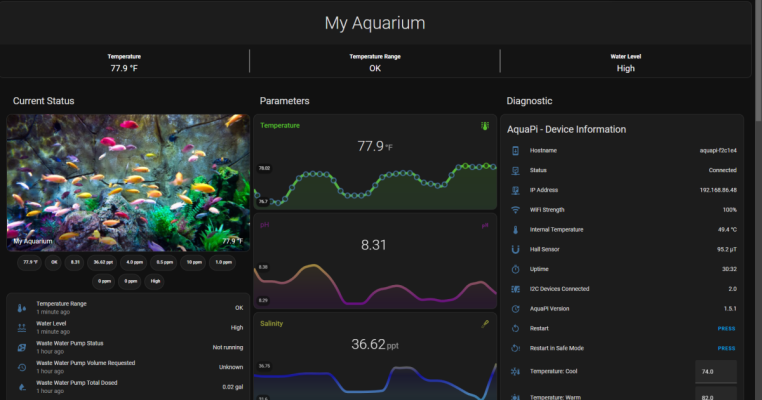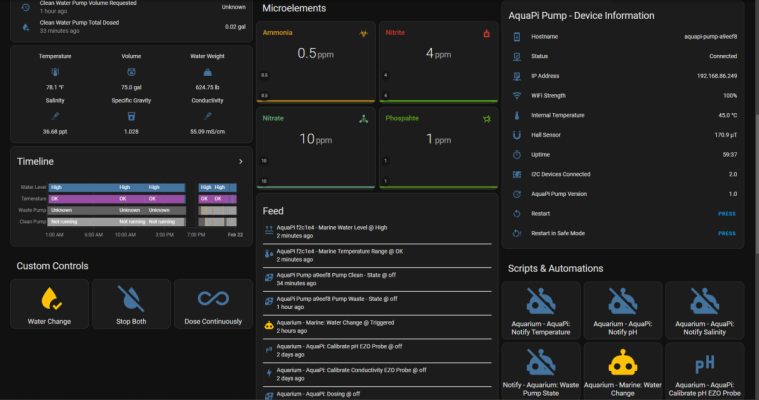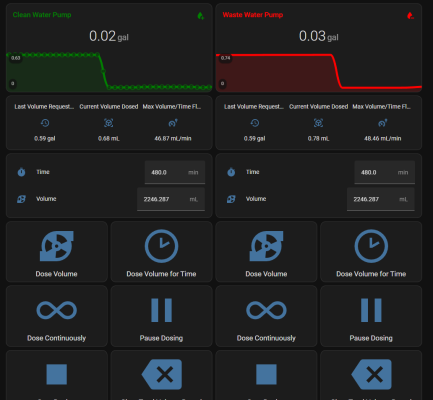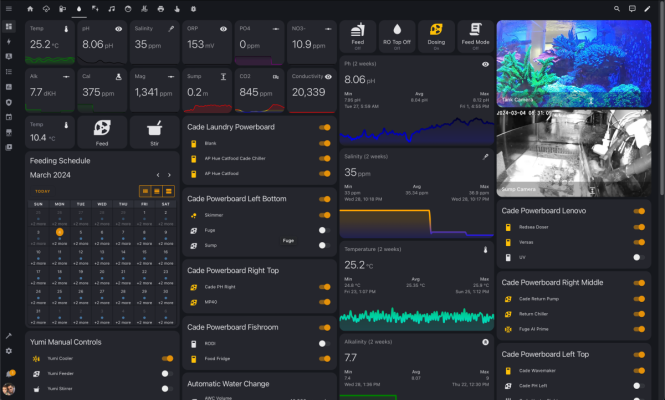I'm working on something that's open-sourced and customizable yet affordable. I got inspired by Reef-Pi, but I am an avid Home Assistant (HA) user and realized the Reef-Pi server was redundant and somewhat unintuitive. I thought, since we have HA, we don't need something somewhat powerful to run a web-server, just something with GPIO that can send the data to HA. I've been using ESP32 devices all over the house now, and made something just for the Aquarium! Using common temperature probes and optical IR sensors for water level. Also optional, is Alas Scientific probes and EZO boards for the more advanced monitoring. I'm using HA Blueprints function to make easy automations for the controller, akin to Neptune Tasks but much more powerful and intuitive!
Take a look here:
And some Blueprints that can still be used for anything aquarium related. Constantly making more:

 community.home-assistant.io
community.home-assistant.io
The Aquarium meets the Smart Home!
Monitor your Aquarium’s Temperature and Water Level. With EZO Circuit Boards and Probe upgrades, you can also monitor your pH, Salinity, Dissolved Oxygen and other EZO circuits and probes.
Powered by an esp32 and Controlled by HomeAssistant. You can set alerts for anything, make automations for auto-top-off (see Blueprints), and make beautiful graphs of your aquarium’s data (see screenshot).
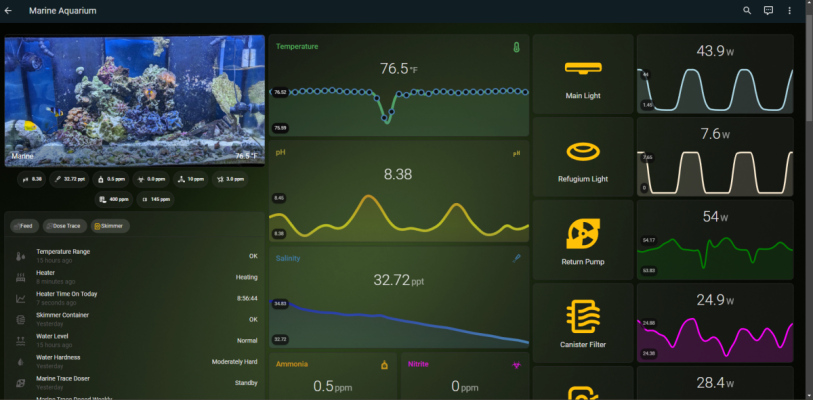
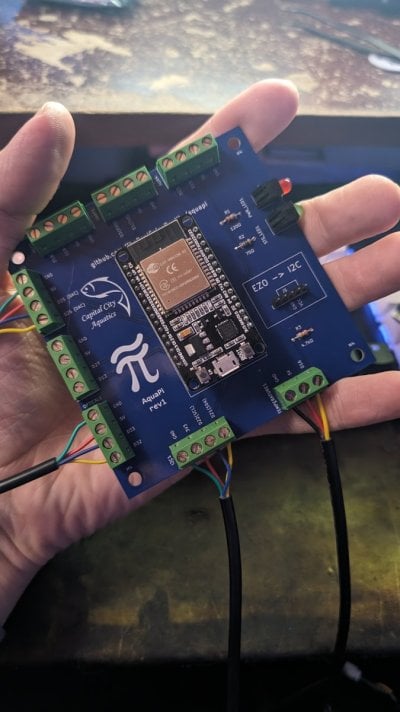
Take a look here:
And some Blueprints that can still be used for anything aquarium related. Constantly making more:
TheRealFalseReality
Open source home automation that puts local control and privacy first.
 community.home-assistant.io
community.home-assistant.io
The Aquarium meets the Smart Home!
Monitor your Aquarium’s Temperature and Water Level. With EZO Circuit Boards and Probe upgrades, you can also monitor your pH, Salinity, Dissolved Oxygen and other EZO circuits and probes.
Powered by an esp32 and Controlled by HomeAssistant. You can set alerts for anything, make automations for auto-top-off (see Blueprints), and make beautiful graphs of your aquarium’s data (see screenshot).









